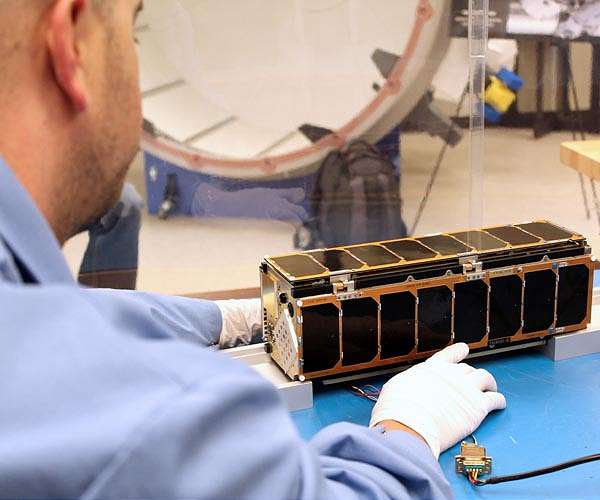
NASA Announces New CubeSat Launch Initiative Partnership Opportunities (Image Credit: Space Daily)
NASA has announced a new round of opportunities through the agency’s CubeSat Launch Initiative (CSLI) for CubeSat developers, including educational institutions, to conduct scientific investigations and technology demonstrations in space and contribute to the agency’s exploration goals.
“Small satellites, such as CubeSats play a valuable role in the agency’s educational, science, and technology investigations, including planetary exploration, Earth observation, and fundamental Earth and space science,” said Bradley Smith, director of launch services within the Space Operations Mission Directorate at NASA Headquarters in Washington. “They are a cornerstone in the development of cutting-edge NASA technologies, such as laser communications, satellite-to-satellite communications, and autonomous movement.”
With a renewed emphasis on education, the next round of NASA’s CSLI opportunities is providing access to low-Earth orbit for U.S. educational institutions, nonprofits with an education or outreach component, and NASA centers and programs for workforce development. Developers can gain hands-on experience designing, building, and operating these small research satellites.
Applicants must submit proposals by 4:30 p.m. EST, Nov. 18, 2022. NASA anticipates making selections by March 17, 2023, for flight opportunities in 2024-2027, although selection does not guarantee a launch opportunity. Designs that include restrictive orbit requirements may limit launch opportunities and lead to later-than-desired launch dates. Applicants are responsible for funding the development of the small satellites.
CSLI encourages participation by Minority Serving Institutions and is actively seeking participation from organizations in states not previously selected. These states are: Delaware, Mississippi, Nevada, North Carolina, Oklahoma, South Carolina, South Dakota, and Wyoming.
CubeSats are part of a class of research spacecraft called nanosatellites. These small satellites are built to standard dimensions (Units or “U”) of approximately 10 cm x 10 cm x 11 cm (about 3.9 in x 3.9 in x 4 in). CubeSats supported by this launch initiative include volumes of 1U, 2U, 3U, 6U, and 12U or volumes that add up to these specified dimensions. CSLI will not select any CubeSat missions proposing to deploy or release parts that are smaller than 1U in size due to trackability, space situational awareness, and orbital debris concerns.
To date, NASA has selected 211 CubeSat missions, 148 of which have been launched into space, with more than 20 missions scheduled for launch within the next year. The selected CubeSats represent participants from 42 states, the District of Columbia, Puerto Rico, and 102 unique organizations.
Related Links
CubeSat Launch Initiative
Microsat News and Nanosat News at SpaceMart.com
|
|
Tweet |
|
|
|
We need your help. The SpaceDaily news network continues to grow but revenues have never been harder to maintain. With the rise of Ad Blockers, and Facebook – our traditional revenue sources via quality network advertising continues to decline. And unlike so many other news sites, we don’t have a paywall – with those annoying usernames and passwords. Our news coverage takes time and effort to publish 365 days a year. If you find our news sites informative and useful then please consider becoming a regular supporter or for now make a one off contribution. |
||
|
SpaceDaily Monthly Supporter $5+ Billed Monthly |
SpaceDaily Contributor $5 Billed Once credit card or paypal |
|
NASA’s Moon-observing CubeSat ready for launch
Washington DC (SPX) Aug 09, 2022
NASA’s water-scouting CubeSat is now poised to hitch a ride to lunar orbit. Not much bigger than a shoe box, Lunar IceCube’s data will have an outsized impact on lunar science.
The satellite is integrated into the Space Launch System (SLS) rocket and ready to journey to the Moon as part of the uncrewed Artemis I mission, launching this year.
Orbiting the Moon, Lunar IceCube will use a spectrometer to investigate lunar ice. Earlier missions revealed water ice on the Moon, but Lunar IceCube wi … read more









